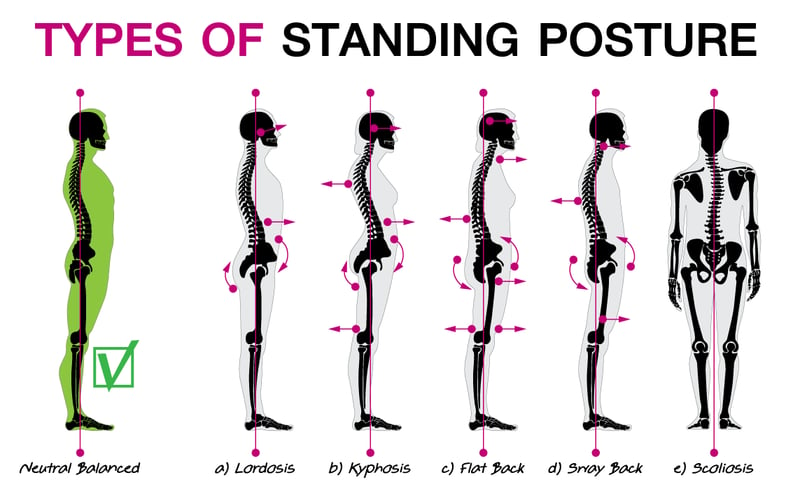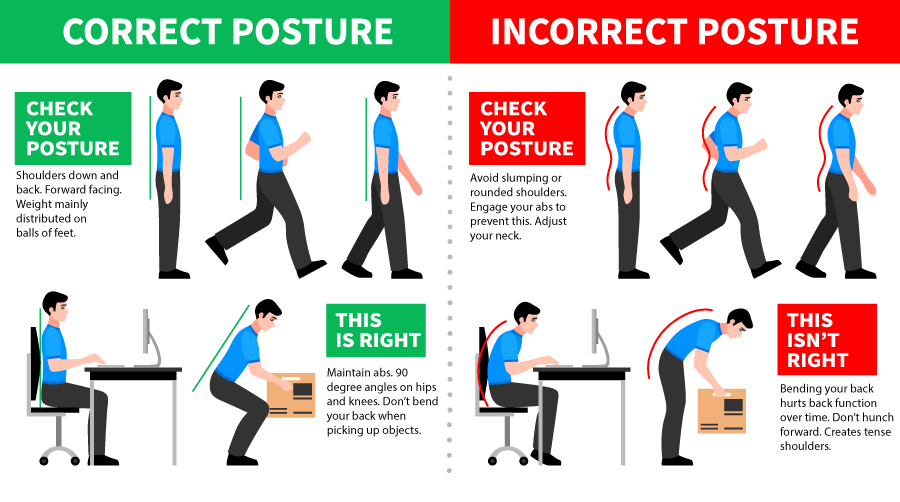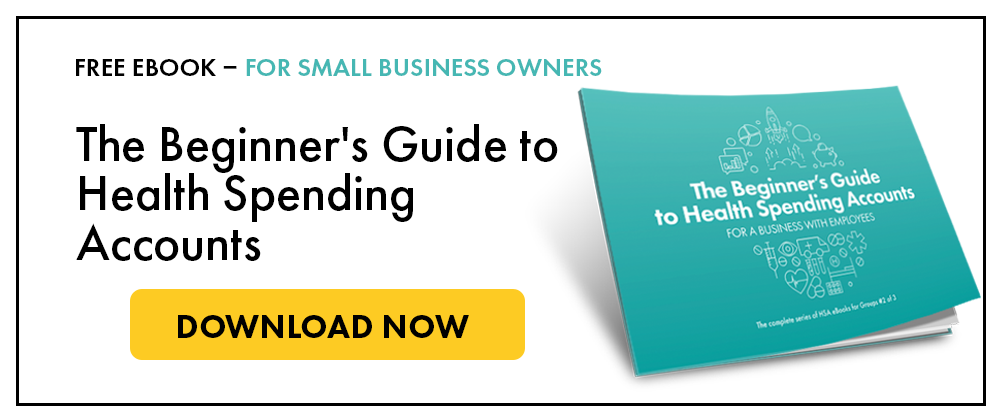Posture isn't just about aesthetics. An often undervalued benefit of good posture is prolonged physical function. Common symptoms like back pain and neck pain, are more often than not, a consequence of poor posture habits. However, don't be inclined to think that a simple re-adjustment of the body will fix any issue. Proper posture is a means to fix your pains, but not the only step in what will be a slow but gradual process:
What's so important about posture?
“Sitting is the new smoking”. A lot of people like to say this phrase, and while it may be cliche, there is certainly some truth behind it. Our society is becoming more and more inclined to sit hours on end, sometimes even a full 8 hours in our office. While you might think that sitting equates to a relaxed body, this is far from true. Sitting for 8 hours is equally as straining on the body as standing for 8 hours. The key is finding a balance.
Humans are efficient beings. Your body adapts to what works best. The poor posture that you have been adapting to for years, will eventually be present even when you don’t want it. In fact, sitting a certain way can affect how you walk. Ever notice someone walking with a hunched shoulders or a forward head, that’s because they may be hunching while sitting to look at a computer screen or phone. Proper posture promotes not only physical benefits but also healthy habits and mental health. Posture and back pain are more often than not, directly related, and will become a major topic in the future as our technology-reliant generation ages.
Prolonged poor posture can eliminate your ability to access certain muscles. Over time, your body becomes imbalanced because certain muscles are overworked while others not at all. Your body adapts and continues to reinforce this poor posture. The end result is tight muscles which pull your body into awkward positions, and thus the cycle perpetuates itself.
Common postural defects:

Neutral Balanced - Correct
Lordosis - Extended behind
Kyphosis - Rounding of the upper back
Flat Back - Weak core, rounded shoulders
Sway Back - Weak core
Scoliosis - Sideways curvature of the spine
Let’s talk about proper posture. What is it? How can I achieve it?

Stretching is the key to relax tight or overworked muscles. Similarly, strengthening is the key to helping under-worked muscles. The difficult part is identifying which muscles are tight and which are weak. Understanding the mechanics of proper posture such as spine and hip function can help to identify your problems.
While there are multiple ways to achieve good posture, there is a lot of conflicting information out there.
Typically, you want the top of your head to extend out to the ceiling, like someone was pulling a string on top of your head. This should bring your chest out (but not too much, you don’t want to cause a military stance). Your neck should be mostly straight with a slight, natural curve. While in this position, you want to engage your abs and glute muscles so that you do not slip into an anterior pelvic tilt (where your bottom sticks out). There should be a slight forward bend of the knees. You don’t want your knees to lock inward. Finally, your weight should be positioned on the balls of your feet, with toes facing forward.
Okay I've figured out my posture. Is it a one and done?
The human body is a complex machine with millions of interconnected parts. There is no immediate or universal fix. Your best bet is to seek a physiotherapist, however, small stretches and light exercises can be done on your own time to help regain proper function and movement.
If you currently have bad posture, you will have areas of tight and under-worked muscles. After releasing your hold on proper posture, you may find that your body automatically slips back into bad form. It is a mental fight to retain the posture. Stretching will ease the tight muscles and core exercises can engage the weak muscles. Over time, these tight muscles will relax and help in regaining proper posture. The reason why you should not stretch in a bad form is because the tight muscles are active in bad posture and cannot relax. You can only feel your true pressure/pain points by developing and maintaining correct standing and sitting posture. It is a conscious and constant battle.
Lifting weights accesses those muscles to hold yourself in the correct positions, but you also need to consciously correct your posture while in the gym. If you get stronger and don't consciously correct, you will see muscle imbalances begin to form. As a result, your posture will not improve.
After the gym and throughout the day, you will want to identify and stretch these tight areas to return proper function and movement.
Are people born with bad posture?
With the exception of a muscle or bone condition, it is very rare for humans to be born with bad posture. Just look at any baby as an example. While there are many different body types, all babies are born with the same posture (some rare exceptions). As adults, we lose our inherent posture because of circumstances like improper exercise, prolonged sitting, and generally poor mental and physical habits.
Ultimately, it is best to seek advice from a professional such as a certified massage therapist or physiotherapist. The service of these costs can be high, but can be worth it in the long run.
If you are business owner, consider using a Health Spending Account (HSA) to pay for these medical services.
Massage and physiotherapy are commonly claimed expenses under a Health Spending Account (HSA). A HSA is a tax tool for Canadian small business owners which turns after-tax personal medical expenses into before-tax business expenses. Essentially, allowing you to pay for medical expenses with before (income tax) dollars. This can create thousands in savings, especially for a recurring expense like scheduled physiotherapy sessions.
To learn more about a Health Spending Account, download our FREE Beginner’s guide:

If you own a business WITH arm's length employees, read this guide instead:
